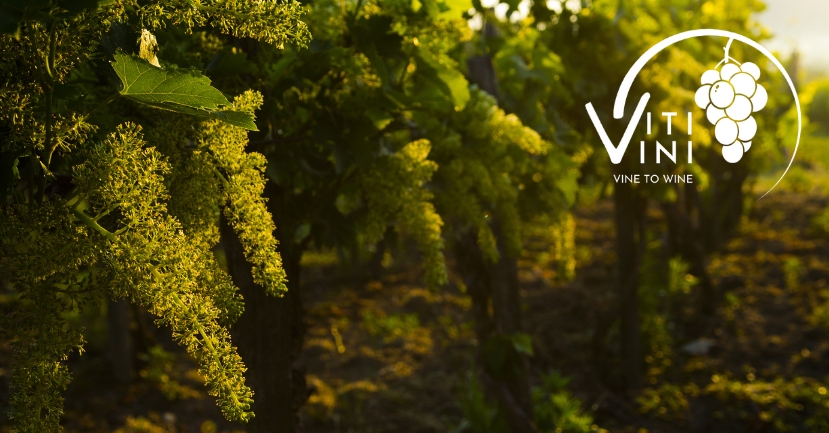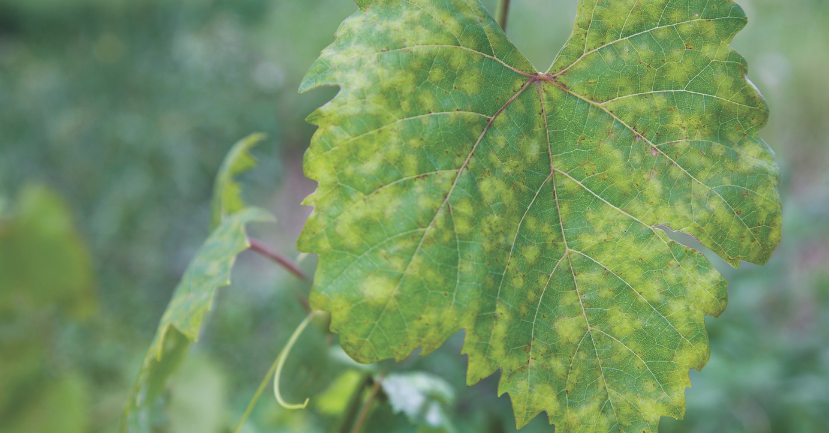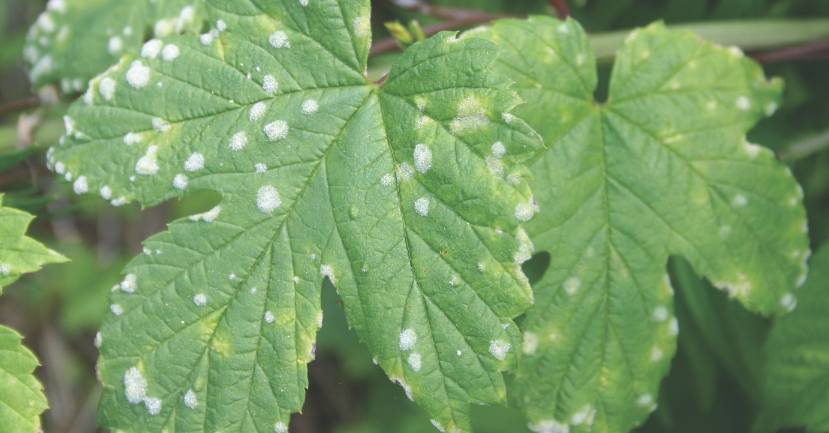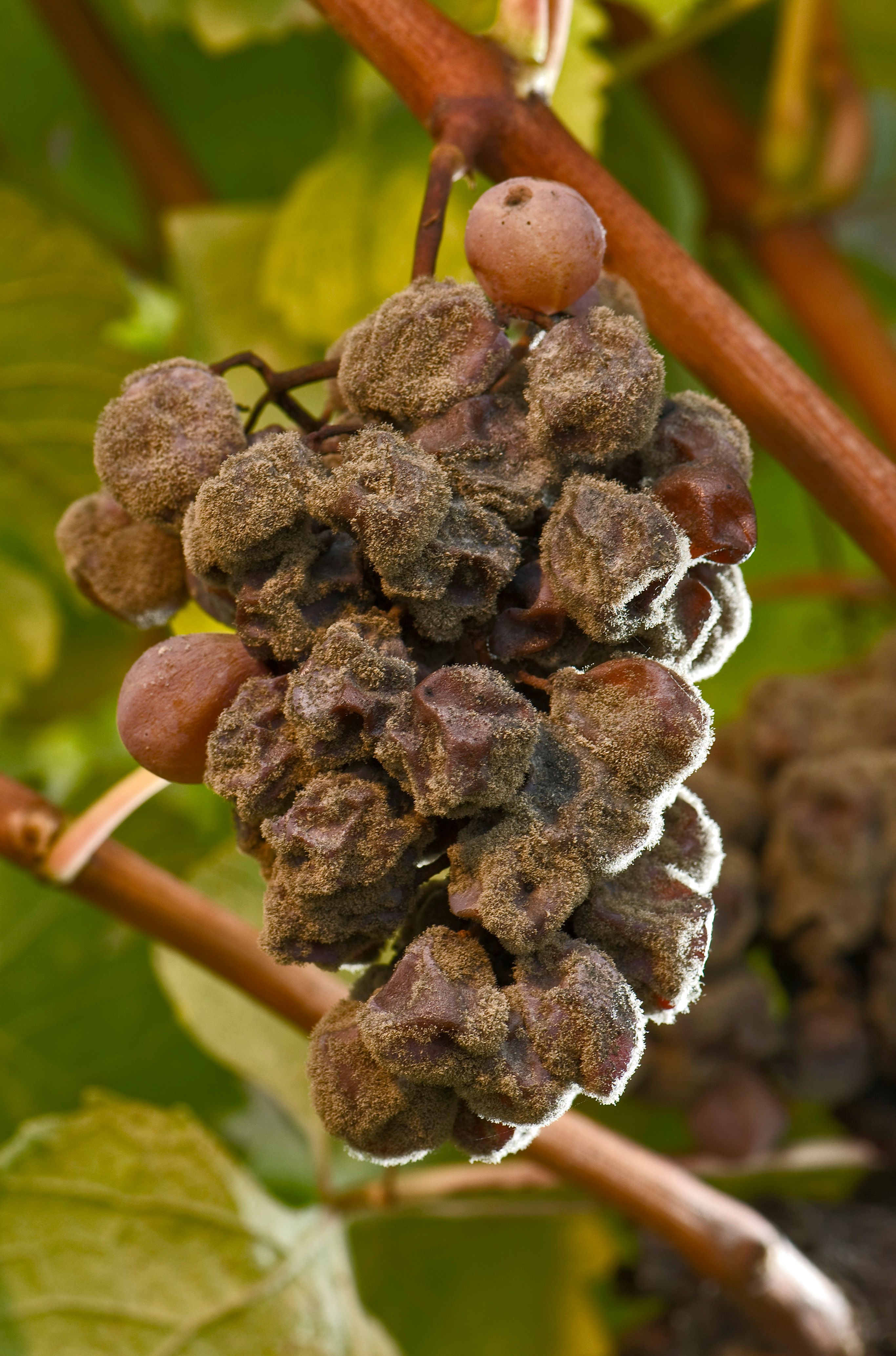BLOG
Vine to Wine: A Year of Viti/Vini - June
Nova Cadamatre MW
Viticulture Insights

June is a time of great change in the vineyard. At the beginning of the month, the vines have short shoots with berries that have just set. By the end of the month, the shoots are almost fully grown and have discernable clusters. This is a period of rapid cell division for the berries. With regard to the clusters, the number of individual cells within each berry increases in preparation for the next phase of cell expansion (to be covered in July) when the final berry size is largely determined.
Once green shoots and leaves begin to form in the spring, fungal diseases immediately become a cause for concern. Maritime climates, in proximity to the coast, are typically humid. Continental climates, although well away from the coast and its moisture, can be impacted by lakes and rivers. Additionally, both climates receive precipitation during the summer which increases the risk of fungal disease. Even Mediterranean climates, which are hallmarked by a dry growing season as a rule, can be humid, especially if the winter rains continued into spring.
The fungal diseases that are of most concern to the wine grower are powdery mildew, downy mildew, and botrytis.
Climate Types
An oceanic/maritime climate is characterized by narrow diurnal (daily) temperature swings, a narrow annual temperature range, temperate summers and cool winters. Rain is plentiful and falls evenly throughout the year; storms are frequent, as is cloud cover. There are few temperature extremes in either direction.
A Mediterranean climate is characterized by hot, dry summers and cool wet winters; however, the seasonal temperature differential is less disparate than is found in continental climates. There is no transitional spring and autumn period; the Mediterranean climate has only two seasons. Rainfall is light to moderate and mostly falls around the periods of equinox and throughout the winter. During the summer months, diurnal temperature swings are moderate near the coast but significantly increase further inland due to rapid heating from the sun and equally rapid cooling at dusk.
A continental climate has warm summers and cold winters with large diurnal and annual temperature variations. Heat spikes and winter freezes are common. Precipitation is moderate. Marginally more rain falls during the warm months rather than the cold months, some in the form of violent thunderstorms. Winter precipitation often arrives as snow.
Excerpted from the French Wine Scholar manual
Powdery mildew, also known as Oidium, generally impacts grapevine leaves but in severe cases can attack the stems and clusters also. It appears as a yellow patch on the leaves at first, then morphs to a light grey or white patch on the top and underside of the leaves often mimicking a dusting of white powder (hence its name). Powdery mildew can be found in all climates where grapes are grown. Sulfur sprays are a common treatment.

Downy Mildew
Downy mildew needs humidity to thrive so it is generally only found in areas where there is spring and summer rainfall. It also begins on leaves as a yellow, oily-looking patch. If conditions are right, these patches morph into a fuzzy fungal growth on the underside of the leaf (hence its name).

Powdery Mildew
Both powdery and downy mildew impact the vine’s ability to photosynthesize and in severe cases can impact cluster development. Copper-containing sprays can be helpful in controlling downy mildew however since copper can build up to toxic levels in the soil with frequent use, it is important to monitor the amount of copper being used.
Botrytis largely attacks the grape cluster, and unlike the other two mildews discussed, is not always a negative occurrence. It can be found in two forms; noble rot and grey rot. Noble rot is the desirable version and appears when cool, moist mornings are followed by warm, dry afternoons. This fungus is key to sweet wines such as Sauternes, Tokaji, and Trockenbeerenauslese. It naturally dehydrates the ripe grape berries and concentrates flavors and acids to create an intensely complex and concentrated wine. Grey rot (or sour rot) results when cool, moist mornings are followed by cool, moist/wet afternoons. Grey rot is never a good thing and can cause severe damage and quality degradation of the fruit.
The Impact of Noble Rot on the Berry 
Botrytis will reduce the grape’s total sugar content by 1/3 and drop tartaric acid and malic acid by 5/6s and 1/3 respectively. The overall result is an increase in total extract due to the diminishing proportion of liquid to solids; the berry’s water content is reduced to half. In addition, the mold produces gluconic acid which imparts a honeyed character to the wines made from botyrized fruit.
Excerpted from the French Wine Scholar manual
Proper vineyard set up can go a long way toward maximizing the quality of a site and the ease in which it can be managed. It can be key in assisting the vineyard management team with controlling fungal diseases. Ensuring that wind can travel easily through the canopy and around the clusters is a way to help manage disease pressure. Choice of rootstock can also help negate soil borne dangers such as phylloxera or nematodes. Also training and trellis design is key to making the most out of a vineyard’s potential. One must always keep in mind the vine’s natural growth habit during training and either work with or in some cases against it to achieve a particular goal. In nature, vines climb trees and it is only once the vine is established at the top of a tree and exposed to the sun that it will start to produce fruit.
Sun exposure on the buds is what initiates the development of clusters so it is essential to manage this aspect of the vineyard to ensure consistent crops from year to year. One example of a training system that works against the vine’s natural habits is the Scott-Henry system. This is typically used on very vigorous sites with V. vinifera since this species generally has an upright growth habit. (Vitis vinifera is the European grape species and is the most common used for high quality wine production)
The bottom half of the Scott-Henry trellis is used to force some of the shoots to grow downward which the vine is not naturally inclined to do. This causes the vines to spend considerable energy trying to grow upward thus reducing the vigor of the vine overall and bringing more vigorous sites into better balance.
In the winery, wines are in their final preparatory steps for bottling. This typically involves filtration. Filtration is the process by which suspended solids, yeast and bacteria are removed from the wine. Filtration also removes the settled fining agents, as well as tartrate crystals which have precipitated out of solution during stabilization. This step is particularly important for wines which have residual sugar. If yeast cells are allowed to remain in contact with sugar post-bottling, there is a danger of a second fermentation in the bottle. This creates a safety hazard for the consumer due to the pressure building up from carbon dioxide, a by-product of the fermentation process.
Next month, we will continue our exploration into the vineyard season by discussing the cell expansion phase, leaf pulling and its purpose, plus the effects of heat and wind in the vineyard. In the winery, we will cover blending and bottling as well as barrel management.
ABOUT "VINE TO WINE: A YEAR OF VITI/VINI" SERIES:
“Vine to Wine” is a new blog series that chronicles what is happening in the vineyard and in the winery each and every month of the calendar year. Nova Cadamatre, MW and winemaker, will author these authoritative and detailed posts drawing upon her studies (Cornell Viticulture and Enology graduate) as well as her winemaking experience in California, China and the Finger Lakes.
Each “Vine to Wine” installment details that month’s vineyard and winery tasks with deep dives into a particular grape growing or wine making topic such as pruning methods and training systems or barrel aging and fermentation vessels.
The series is designed to give wine students and educators an opportunity to develop or hone their technical savvy.
MORE "VINE TO WINE" ARTICLES:
Want to know when new blog articles are released? Join this list to be notified!



